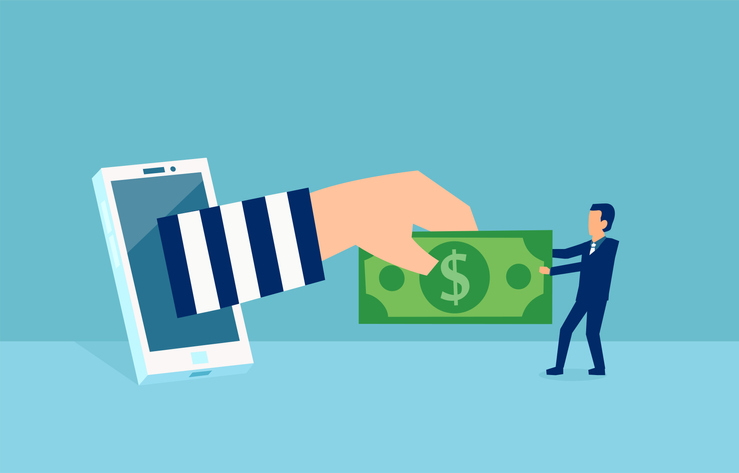Influencing in the Crypto Space
How did influencing within the crypto world become so lucrative?
Since Bitcoin went viral earlier this decade, we have seen more applications of blockchain technology gain traction.
From NFTs to newer altcoins, there has been an explosion of blockchain projects. However, while the rise of digital assets is undoubtedly remarkable, it has been far from perfect. The world has recently witnessed the proliferation of digital assets that have little or no actual value. Unlike Bitcoin, many newer altcoin projects do not have any intrinsic utility. Similarly, as mentioned by Coinbase co-founder Fred Ehrsam, 90% of NFTs would eventually become worthless.
This situation then begs the question; how did worthless digital assets dominate the space? The answer is pretty straightforward; it is primarily a product of misleading influencing in the crypto space.
Impact of Influencing in the Crypto Space
Influencers are people who have been able to build a reputation and expertise regarding a particular topic on social media. Generally, an influencer can affect other people’s purchasing decisions due to this reputation. Influencers often leverage their authority, popularity, knowledge, and relationship with the audience.
In the crypto context, influencers could be anything from ‘YouTube Analysts’ to Twitter commentators. These influencers can make digital assets look attractive or otherwise with their content. Moreover, most people who acquire digital assets often do so as an investment. It is, therefore, only expected that they would look to any authority figure for guidance on which asset or currency is more likely to turn a profit. And this is precisely how crypto influencers wield their power.
To illustrate the impact influencing is capable of, one need not look further than the Dogecoin phenomenon driven by Elon Musk. In May 2021, Dogecoin rose all the way up to 74 cents in a build-up to Elon Musk’s Saturday Night Live appearance. Later that year, a single tweet from Musk helped reverse a Dogecoin price drop. Thus, it is clear that influencers in the crypto space quite literally have considerable influence. However, in some ways, this has become problematic.
The Problem with Influencing in the Crypto Space
One major problem with influencers in the crypto space and across several other industries is the use of underhanded tactics to boost online credibility. These tactics usually come in the form of using bots to drive engagement, buying fake followers to appear more popular, or even faking the account of a known celebrity.
These activities create an illusion of credibility, which misleads people to believe that they can reasonably trust such an influencer. For instance, in 2018, a fake account pretending to be John McAfee promoted the digital coin GVT. Given the influence of McAfee in the crypto space, many followers purchased the coin, and its trading volume doubled. Shortly after, the price of the coin fell again, and it turned out to be a classic pump and dump scheme.
However, beyond fake influencing, there is also the problem of irresponsible influencing. This term refers to the influencers who, though they have real credibility, misuse the trust people have in them to promote low-quality crypto projects. And while such promoters might claim not to be malicious, the fact is that they get paid, and many people end up losing a lot of money in these projects.
For instance, in June 2021, four influencers from the famous esports team FaZe Clan endorsed a cryptocurrency project. The said project was a token called Save the Kids, which was marketed as a way to make the world a better place. The members of FaZe Clan, with their huge following, further sold the project as something exciting. However, hours after the token’s launch, its value completely crashed, making victims of the many fans who invested.
Countless other events like this have occurred where social media influencers leverage their following to prop up a crypto/NFT project, which turns out to be a scam.
An example of a scam that commonly occurs is a rug pull. Rug pulls occur when developers create a new crypto token, artificially pump the price, and pull out with investors’ funds before abandoning the project. Some influencers have been accused of taking part in rug pull scams. For instance, Sam Pepper, a former popular YouTuber, was alleged to have participated in the MoonPug Rug Pull scam.
Another problem with influencers in the crypto space is transparency. Often, influencers fail to disclose the true nature of their content as a paid promotion. Thus, in many cases, these promotion campaigns are passed off as genuine investment advice based on some analysis. Such content is typically ended with statements like “Do Your Own Research,” perhaps as a way to absolve the influencer of any responsibility.
It is, therefore, necessary to examine the statement “Do Your Own Research” (DYOR). What does it mean exactly? And does it release influencers who deliberately or negligently mislead from any liability?
DYOR: What It Means & How It is Used
As mentioned earlier, DYOR stands for Do Your Own Research. It is a common phrase crypto enthusiasts use when giving investment guidance or advice. However, the phrase ‘Do Your Own Research’ or its variant ‘This Is Not Financial Advice’ is not limited to the crypto ecosystem. It is also routinely used by commentators in the traditional financial industry.
Generally, when people say ‘Not Financial Advice’ or ‘DYOR’ after literally giving financial advice, they are protecting themselves from hefty fines and other legal consequences. This fear is because, in many jurisdictions, financial advice is regulated. Hence, only registered and accredited professionals are legally allowed to do so.
In essence, by saying DYOR, the influencer is ‘encouraging’ you not to take their word for it and make your findings. The phrase is intended to reduce uninformed investors and push people to research and understand a digital asset before investing. However, more influencers are now using these disclaimers as a tool to remain unaccountable. They purposefully promote certain assets intending to convince as many people as possible to invest. They then include these disclaimers to protect themselves if something goes wrong.
Does DYOR protect influencers from liability?
Would the DYOR or ‘Not Financial Advice’ disclaimer completely protect an influencer who promotes a project that goes south? Well, it depends. In the US, for instance, the business of providing investment advice is regulated by the Investment Advisers Act of 1940. This law makes it illegal for people other than registered professionals to provide investment advice. The problem, however, is that the SEC has stated that the regulation of investment advisers currently applies exclusively to securities. The SEC has further clarified that coins and cryptos like Bitcoin and Ether are not securities. In the same vein, NFTs are unlikely to be treated as securities. The effect of this is that crypto analysts/influencers are not regulated as investment advisers.
But does that mean influencers can get away with deliberately misleading people?
Not exactly. Regardless of whatever disclaimer is included, intentionally participating in a scam is a crime. Thus, if influencers are proven to be complicit in a crypto scam, they can be held liable. For instance, Kim Kardashian, Floyd Mayweather, and Paul Pierce are being sued for collaborating with EthereumMax to “misleadingly promote and sell” the crypto project. The scheme has been alleged to have been a pump and dump scheme, hence the legal action.
Furthermore, the SEC in a 2017 DAO Report, has stated that Initial Coin Offerings (ICO) may be securities which means they must comply with federal securities laws. Subsequently, in 2018, the SEC announced charges against Floyd Mayweather and DJ Khaled. These charges were for “failing to disclose payments they received for promoting investments in ICOs.” Thus, while the legal framework for regulating digital assets is not definite yet, influencers can still be held accountable in specific circumstances, as illustrated.
How is the Digital Asset Space Impacted?
Clearly, the trend of fake and irresponsible influencing in the crypto space do not bode well for the reputation of digital assets. Digital assets have been repeatedly touted as the future of the financial world. However, this will never be the case if worthless coins, NFTs, and scams continue to dominate the space. The world of digital assets is already incredibly risky; irresponsible influencing makes it even more so. It is unsurprising to imagine that this trend will only discourage the average retail investor from getting into digital assets. Similarly, developers of worthwhile projects would only get drowned out in the noise created by heavily promoted mediocre projects and scams.
The Way Forward
The crypto space and ecosystem are in dire need of regulation. It is essential to mandate influencers to declare when they have been paid to promote a project. This way, people can distinguish between paid and unbiased content from influencers.
Similarly, it is crucial for investors to do their research before investing in any project. This effort is the most effective way for people to protect themselves. Even when not being paid, an influencer may have other interests in promoting a coin, interests that may not necessarily align with yours. No doubt, investors should evaluate crypto/NFT projects themselves and determine their worth. You should read extensively about projects you’re considering, engage with the community, and examine their platforms.
Don’t forget to read our white paper.



